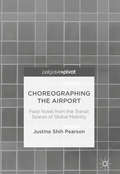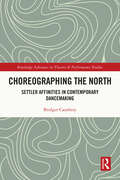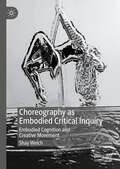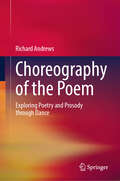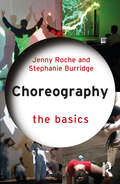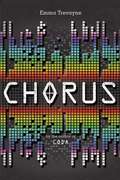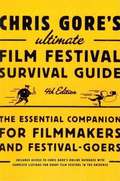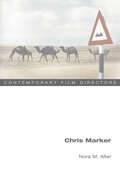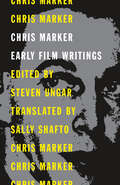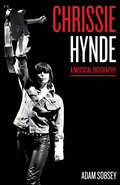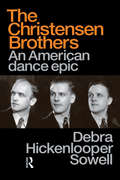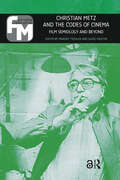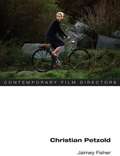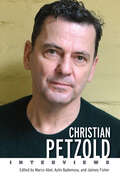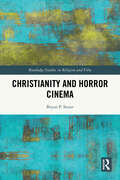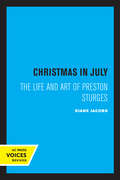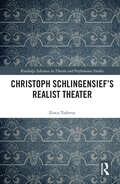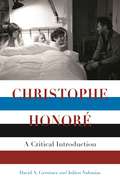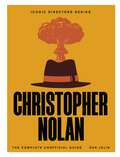- Table View
- List View
Choreographing the Airport: Field Notes from the Transit Spaces of Global Mobility
by Justine Shih PearsonThis book investigates the global hub airport as an exemplar of cosmopolitan culture and space. A machine made for movement, itself perched at the crossroads of the world's incessant mobility, the airport is both a symbol of and stage for the ways in which we construct and inhabit the world today. Taking an ethnographically-inflected approach, this study brings together knowledge of the moving body from dance and performance and the study of systems of mobility within cultural and mobilities studies, in order to call attention to the kinaesthetic experience of global space. What is the choreography of the global airport? How does it perform on us. How do we perform within it? Extending thinking about contemporary cosmopolitanism and cultural identity, and the performativity of places and identities, this book is essential reading for those interested in cultural debates around globalisation, the innovative application of performance theory towards everyday experience, and interdisciplinary methodologies.
Choreographing the North: Settler Affinities in Contemporary Dancemaking (Routledge Advances in Theatre & Performance Studies)
by Bridget CautheryChoreographing the North examines 11 contemporary dance pieces that perform northern culture, landscape, folklore, and ideas of "North."The choreographers, from Canada, the United States, the United Kingdom, Belgium, Luxembourg, Australia, and Argentina, translate their real or imagined journeys to the North for stage and/or screen. This book examines the ways Indigenous subjects and subjectivities have been diminished and/or distorted and considers how that diminishment has fuelled misrepresentation both inside and outside the field of contemporary dance. Where Indigenous presence is represented in dances about the North, it is as discarnate storytellers or “everyman” pastoral figures against backdrops of ice and snow. Indigenous presence is there but it is romanticized, caricatured, flattened. Using these works as moving texts Cauthery argues that, in many regards, these dances are colonizing acts that either ignore or erase the land and people upon which they are based. In analyzing and deconstructing these dances, this book acknowledges the land- and culture-based inheritances embedded in and performed through the works themselves.This study will be of great interest to students and scholars in dance studies, theatre and performance studies, and cultural studies, as well as those interested in environmental psychology, human geography, and the expanding field of Arctic humanities.
Choreography as Embodied Critical Inquiry: Embodied Cognition and Creative Movement
by Shay WelchIn this book, Shay Welch expands on the contemporary cognitive thinking-in-movement framework, which has its roots in the work of Maxine Sheets-Johnstone but extends and develops within contemporary embodied cognition theory. Welch believes that dance can be used to ask questions, and this book offers a method of how critical inquiry can be embodied. First, she presents the theoretical underpinnings of what this process is and how it can work; second, she introduces the empirical method as a tool that can be used by movers for the purpose of doing embodied inquiry. Exploring the role of embodied cognition and embodied metaphors in mining the body for questions, Welch demonstrates how to utilize movement to explore embodied practices of knowing. She argues that our creative embodied movements facilitate our ability to bodily engage in critical analysis about the world.
Choreography of the Poem: Exploring Poetry and Prosody through Dance
by Richard AndrewsThis book explores analogies and correspondences between dance and poetry, with an emphasis on how dance and dance choreography can shed light on poetry, poetic form and the teaching of poetry. Chronologically, the book examines the Renaissance/Baroque period in Europe and moves through early modern to contemporary poetry and dance. Internationally, it explores Asian, African and American dance choreographies and poetry alongside European, as well as hybrid influences of the different traditions on each other. It argues that the poem on the page, and in spoken performance, inhabits space within frameworks of expectation. Choreography of the Poem accesses interest from the perspectives of each of the modes of communication: physical movement in dance, and spoken and written communication in poetry. It reveals what dance choreography can bring to an understanding and appreciation of the making of poetry in schools, colleges and universities.
Choreography: The Basics (The Basics)
by Stephanie Burridge Jenny RocheThis book provides a comprehensive and concise overview of choreography both as a creative skill and as a field of study, introducing readers to the essential theory and context of choreographic practice. Providing invaluable practical considerations for creating choreography as well as leading international examples from a range of geographical and cultural contexts, this resource will enhance students’ knowledge of how to create dance. This clear guide outlines both historical and recent developments within the field, including how choreographers are influenced by technology and intercultural exchange, whilst also demonstrating the potential to address social, political and philosophical themes. It further explores how students can devise and analyse their own work in a range of styles, how choreography can be used in range of contexts – including site-specific work and digital technologies – and engages with communities of performers to give helpful, expert suggestions for developing choreographic projects. This book is a highly valuable resource for anyone studying dancemaking, dance studies or contemporary choreographic practice and those in the early stages of dance training who wish to pursue a career as a choreographer or in a related profession.
Chris Gore's Ultimate Film Festival Survival Guide: The Essential Companion for Filmmakers and Festival-Goers (Fourth Edition)
by Chris GoreThe guerrilla guide to marketing and selling an indie film. Some people are just there for the loot bags. But most of the people at a film festival are trying to market and sell an independent film. Don't be just one of the horde. Use Chris Gore's Ultimate Film Festival Survival Guide to help your indie film stand out! Entertainment Weekly loves Gore's book, calling it a "treatise on schmoozing, bullying, and otherwise weaseling one's way into the cinematic madness known as film festivals." The newly revised and updated fourth edition includes full listings for more than 1,000 film festivals, with complete tips and contact information, plus in-depth analysis of the Big Ten festivals. With detailed, fresh how-tos for marketing, distributing, and selling a film and using websites to build buzz, plus interviews with top festival filmmakers, step-by-steps on what to do after your film gets accepted, and explanations of how to distribute a film, Chris Gore's guide tells filmmakers exactly how to become a player in the indie world. Chris Gore's Ultimate Film Festival Survival Guide includes complete listings for more than 1,000 festivals--find the best for indie, documentary, short, student, digital, and animation, and a CD-ROM!
Chris Marker (Contemporary Film Directors)
by Nora M. AlterThe maverick filmmaker's personal and political relationships with film Best known in the United States for his visionary short film La Jetée, Chris Marker spearheaded the bourgeoning Nouvelle Vague scene in the late 1950s. His distinctive style and use of still images place him among the postwar era's most influential European filmmakers. His fearless political cinema, meanwhile, provided a bold model for other activist filmmakers. Nora M. Alter investigates the core themes and motivations behind an unpredictable and transnational career that defies easy classification. A photographer, multimedia artist, writer, broadcaster, producer, and organizer, Marker cultivated an artistic dynamism and always-changing identity. ""I am an essayist,"" Marker once said, and his 1953 debut filmic essay The Statues Also Die (with Alain Resnais) exposed the European art market's complicity in atrocities in the former Belgian Congo. Ranging geographically as well as artistically, Marker's travels led to films like the classic Sans Soleil and Sunday in Peking. His decades-long struggle against global injustice involved him with Night and Fog, Le Joli Mai, Far from Vietnam, Le fond du l'air est Rouge, and Prime Time in the Camps. Insightful and revealing, Chris Marker includes interviews with the notoriously private director.
Chris Marker: Early Film Writings
by Chris MarkerFormative writings by French avant-garde filmmaker Chris Marker It is hard to imagine French cinema without La Jetée (1962), the time-travel short feature by the reclusive French filmmaker Christian François Bouche-Villeneuve, better known as Chris Marker. He not only influenced artists ranging from David Bowie to J. G. Ballard but also inspired the cult film 12 Monkeys. Marker&’s influence expanded beyond his own films through his writings for the French monthly Esprit as well as anthologies and newly founded film publications. This first English translation of Marker&’s early writings on film brings together reviews and essays, published between 1948 and 1955, that span the topics of film style, adaptation, and ideology, as well as animation and the debates surrounding 3-D and wide-screen technologies, ranging from late silent-era films to postwar Hollywood&’s efforts to contend with the rise of television. Readers will find commentary on Laurence Olivier&’s 1944 screen adaptation of Henry V, a scathing review of Robert Montgomery&’s Lady in the Lake (1947), critiques of Walt Disney productions, a discussion of the pitfalls of prioritizing commercial success over aesthetic values, and more. An indispensable resource for cinephiles and scholars alike, these texts document the emergence of Marker&’s critical voice and situate him alongside such contemporaries as André Bazin and Eric Rohmer, as well as the future French New Wave figures Jean-Luc Godard and François Truffaut. They show how his remarks on individual films open onto his engagement with films as social and cultural phenomena.
Chrissie Hynde: A Musical Biography (American Music Series)
by Adam Sobsey&“Sobsey truly does deliver the goods with this biography . . . This work is as gloriously comprehensive as it gets on the subject of Chrissie Hynde.&” —PopMatters A musical force across four decades, a voice for the ages, and a great songwriter, Chrissie Hynde is one of America&’s foremost rockers. Inducted into the Rock and Roll Hall of Fame in 2005, she and her band The Pretenders have released ten albums since 1980. The Pretenders&’ debut LP has been acclaimed as one of the best albums of all time by VH1 and Rolling Stone. In a business filled with &“pretenders&” and posers, Hynde remains unassailably authentic. Although she blazed the trail for countless female musicians, Hynde has never embraced the role of rock-feminist and once remarked, &“It&’s never been my intention to change the world or set an example for others to follow.&” Instead, she pursued her own vision of rock—a band of &“motorcycles with guitars.&” Chrissie Hynde: A Musical Biography traces this legend&’s journey from teenage encounters with rock royalty to the publication of her controversial memoir Reckless in 2015. Adam Sobsey digs deep into Hynde&’s catalog, extolling her underrated songwriting gifts and the greatness of The Pretenders&’ early classics and revealing how her more recent but lesser-known records are not only underappreciated but actually key to understanding her earlier work, as well as her evolving persona. Sobsey hears Hynde&’s music as a way into her life outside the studio, including her feminism, signature style, vegetarianism, and Hinduism. She is &“a self-possessed, self-exiled idol with no real forbears and no true musical descendants: a complete original.&”
Chrissie Hynde: A Musical Biography (American Music Series)
by Adam Sobsey&“Sobsey truly does deliver the goods with this biography . . . This work is as gloriously comprehensive as it gets on the subject of Chrissie Hynde.&” —PopMatters A musical force across four decades, a voice for the ages, and a great songwriter, Chrissie Hynde is one of America&’s foremost rockers. Inducted into the Rock and Roll Hall of Fame in 2005, she and her band The Pretenders have released ten albums since 1980. The Pretenders&’ debut LP has been acclaimed as one of the best albums of all time by VH1 and Rolling Stone. In a business filled with &“pretenders&” and posers, Hynde remains unassailably authentic. Although she blazed the trail for countless female musicians, Hynde has never embraced the role of rock-feminist and once remarked, &“It&’s never been my intention to change the world or set an example for others to follow.&” Instead, she pursued her own vision of rock—a band of &“motorcycles with guitars.&” Chrissie Hynde: A Musical Biography traces this legend&’s journey from teenage encounters with rock royalty to the publication of her controversial memoir Reckless in 2015. Adam Sobsey digs deep into Hynde&’s catalog, extolling her underrated songwriting gifts and the greatness of The Pretenders&’ early classics and revealing how her more recent but lesser-known records are not only underappreciated but actually key to understanding her earlier work, as well as her evolving persona. Sobsey hears Hynde&’s music as a way into her life outside the studio, including her feminism, signature style, vegetarianism, and Hinduism. She is &“a self-possessed, self-exiled idol with no real forbears and no true musical descendants: a complete original.&”
Christensen Brothers: An American Dance Epic (Choreography and Dance Studies Series #Vol. 16)
by Debra Hickenlooper SowellFirst Published in 1998. Routledge is an imprint of Taylor & Francis, an informa company.
Christian Metz and the Codes of Cinema: Film Semiology and Beyond (Film Theory in Media History)
by Margrit Tröhler Guido KirstenA pioneering figure in film studies, Christian Metz proposed countless new concepts for reflecting on cinema, rooted in his phenomenological structuralism. He also played a key role in establishing film studies as a scholarly discipline, making major contributions to its institutionalisation in universities worldwide. This book brings together a stellar roster of contributors to present a close analysis of Metz's writings, their theoretical and epistemological positions, and their ongoing influence today. This book brings together a stellar roster of contributors to present a close analysis of Metz's writings, their theoretical and epistemological positions, and their ongoing influence today.
Christian Petzold (Contemporary Film Directors)
by Jaimey FisherIn eleven feature films across two decades, Christian Petzold has established himself as the most critically celebrated director in contemporary Germany. The best-known and most influential member of the Berlin School, Petzold's career reflects the trajectory of German film from 1970s New German Cinema to more popular fare in the 1990s and back again to critically engaged and politically committed filmmaking. In the first book-length study on Petzold in English, Jaimey Fisher frames Petzold's cinema at the intersection of international art cinema and sophisticated genre cinema. This approach places his work in the context of global cinema and invites comparisons to the work of directors like Pedro Almodovar and Rainer Werner Fassbinder, who repeatedly deploy and reconfigure genre cinema to their own ends. These generic aspects constitute a cosmopolitan gesture in Petzold's work as he interprets and elaborates on cult genre films and popular genres, including horror, film noir, and melodrama. Fisher explores these popular genres while injecting them with themes like terrorism, globalization, and immigration, central issues for European art cinema. The volume also includes an extended original interview with the director about his work.
Christian Petzold: Interviews (Conversations with Filmmakers Series)
by Marco Abel, Aylin Bademsoy, and Jaimey FisherChristian Petzold (b. 1960) is the best-known filmmaker associated with the “Berlin School” of postunification German cinema. Identifying as an intellectual, Petzold self-consciously approaches his work for both the big and the small screen by weaving critical reflection on the very conditions of contemporary filmmaking into his approach. Archeologically reconstructing genre filmmaking in a national film production context that makes the production of genre cinema virtually impossible, he repeatedly draws on plots from classic films, including Alfred Hitchcock’s, in order to provide his viewers with the distinct pleasures only cinema can instill without, however, allowing his audience the comforts the “cinema of identification” affords them. Including thirty-five interviews, Christian Petzold: Interviews is the first book in any language to document how one of Germany’s best-known director's thinking about his work has evolved over the course of a quarter of a century, spanning his days as a flailing student filmmaker in the early 1990s in postunified Germany to 2020, when his reputation as one of world cinema’s most respected auteurs has been firmly enshrined. The interviews collected here—thirty of which are published in English for the first time—highlight Petzold’s career-long commitment to foregrounding how economic operations affect individual lives. The volume makes for a rich resource for readers interested in Petzold’s work or contemporary German cinema but also those looking for theoretically challenging and sophisticated commentary offered by one of global art cinema’s leading figures.
Christianity and Horror Cinema (Routledge Studies in Religion and Film)
by Bryan P. StoneChristianity and Horror Cinema explores ways that Christian beliefs, spiritualities, practices, and symbols provide the religious and existential "depths" out of which the monsters of Western horror cinema have emerged, arguing that they are, in several respects, the monsters for which Christians are responsible. Horror cinema preys on Christianity’s narrative, moral, cultural, and aesthetic traditions; reverses them; upends them; inverts them; and offends them. But it also reflects and relies on them. The book focuses on seven subgenres in the cinema of horror: ghosts, witches, the demonic or Satanic, vampires, nature horror, zombies, and psychological horror. Each chapter traces the history of that subgenre, taking up a theological analysis of ways that horror cinema capitalizes on ambiguities, contradictions, anxieties, and tensions in Christianity—for example, its treatment of the body, nature, sexuality, women, or those it deems pagan or religiously "other." The author examines a variety of films that are important for thinking about the relationship of Christianity to horror cinema. The book will be of interest to scholars of religion, theology, and film studies.
Christmas Ballerina: Special 3 (Secret Kingdom #3)
by Rosie BanksEllie, Summer and Jasmine are getting ready for their Christmas celebrations when the Magic Box summons them to the Secret Kingdom. Their old friend King Merry is in trouble again - his wicked sister Queen Malice has cast another of her horrible spells on him! Can the girls work together to break the spell, or will Christmas be ruined for everyone in the Secret Kingdom?A bumper Christmas instalment in the gorgeous new series that's tailor-made for little girls.
Christmas Tales
by William McInnesI can't help it if I'm a boring conservative dag, but I love Christmas, always have and hopefully always will. Whatever brand of faith you fly under, even if you proclaim you don't have one, Christmas is a time of generosity, good citizenship and decency.It's the holiday where shopping centres become a sea of dazed shoppers bearing checklists as long as your arm, lunch is a neverending buffet of prawns and ham and your electricity bill is doubly struck by having to run the fan all day and keep those decorative lights blinking through the night.William McInnes, bestselling author of FATHERHOOD, WORSE THINGS HAPPEN AT SEA, and A MAN'S GOT TO HAVE A HOBBY tackles the silly season in a way only he can - telling stories brimming with good humour and nostalgia, to remind us what Christmas is all about: family.
Christmas at Silver Dale: the perfect Christmas romance for 2019 - featuring the original characters in the Animal Ark series! (Animal Ark Revisited #6)
by Lucy DanielsThe perfect Christmas romance for 2019 - featuring the original characters in the much loved Animal Ark series!**Summer Days at Sunrise Farm, the new book in the Animal Ark revisited series, is currently available!**Although Christmas should be the most wonderful time of year, Mandy Hope is struggling. Her relationship with Jimmy Marsh is on the rocks, while her best friend James has a gorgeous new son which only confirms how much Mandy wants children of her own. Desperately in need of a friend, Mandy strikes up a close relationship with new Welford resident Geraldine Craven, who is only too happy to offer a shoulder to cry on. Geraldine looks to be a lifeline in these troubled times, until she reveals a devastating secret about Mandy's past.With so much uncertainty, is there still hope for a happy Christmas?******Read what everyone's saying about Animal Ark Revisited!'An adorable read [with] a real sense of village community' Bookworms and Shutterbugs'Just the right amount of nostalgia... wonderful and very poignant' - The World is a Book Blog'Heartwarming and endearing... a gorgeous story filled with hope, joy, sweetness and light combined with the honesty of real life' - Amazon'An incredibly lovely story' - Rachel's Random Reads'Will leave you feeling cosy and uplifted' Goodreads'I loved every minute' Amazon'I had tears in my eyes at the first chapter' - Goodreads'One of the best books I've read!' Amazon(P)2019 Hodder & Stoughton Limited
Christmas in July: The Life and Art of Preston Sturges
by Diane JacobsIn this first critical biography of Preston Sturges, Diane Jacobs brings to life the great comic filmmaker whose career Andrew Sarris described as "one of the most brilliant and bizarre bursts of creation in the history of the American cinema." Jacobs uses letters and manuscripts never before revealed, as well as interviews with people who knew Sturges—including three of his wives—to portray this fascinating, contradictory man. In addition to discussing his major films, she also examines heretofore unknown work and shows that Sturges was highly creative even near the end of his life, a time when many believed he had lost his touch. Sturges secured his place in film history as the creator of such classic films as The Lady Eve, Sullivan's Travels, and The Palm Beach Story. In 1939 he became the first screenwriter to win the right to direct his own script—the result was the Oscar-winning The Great McGinty. Creator of Unfaithfully Yours, The Miracle of Morgan's Creek, and Hail the Conquering Hero, he was the third highest-paid man in the United States by the late 1940s. He owned a swank Hollywood restaurant and was known as an ebullient raconteur as well as a world-famous filmmaker. A little over a decade later, Sturges died in New York, impoverished and rejected by Hollywood. The euphoria of success, the fitfulness of luck, the promise and poignancy of the American Dream—the themes of Sturges's work also marked the man. Diane Jacobs achieves a singular success in illuminating his extraordinary life. This title is part of UC Press's Voices Revived program, which commemorates University of California Press’s mission to seek out and cultivate the brightest minds and give them voice, reach, and impact. Drawing on a backlist dating to 1893, Voices Revived makes high-quality, peer-reviewed scholarship accessible once again using print-on-demand technology. This title was originally published in 1992.
Christmas in the Movies: 35 Classics to Celebrate the Season (Turner Classic Movies)
by Jeremy ArnoldNow revised and expanded with more beloved films and loads of special features and photos across 70+ pages of new content, this is the must-have viewing guide for the holidays, showcasing the greatest and most beloved Christmas movies of all time. Nothing brings the spirit of the season into our hearts quite like a great holiday movie. Turner Classic Movies' Christmas in the Movies showcases the very best among this uniquely spirited strain of cinema. Each film is profiled on what makes it a "Christmas movie," along with behind-the-scenes stories of its production, reception, and legacy. Complemented by a trove of full-color and black-and-white photos, this volume is a glorious salute to a collection of the most treasured films of all time. Among the 35 films included: The Shop Around the Corner, Holiday Inn, Meet Me in St. Louis, It's a Wonderful Life, Miracle on 34th Street, White Christmas, A Christmas Story, National Lampoon's Christmas Vacation, Die Hard, Home Alone, Little Women, The Preacher's Wife, Love Actually, The Nightmare Before Christmas, and many more.
Christmas with Southern Living 2016: The Complete Guide To Holiday Cooking And Decorati
by Editors of Southern Living MagazineCelebrate Christmas in 2016 with Southern Living Magazine. It doesn’t matter if you live deep in the heart of the South or far from it, Christmas with Southern Living delivers holiday inspiration with the turn of every page. Whether your holiday tradition is to host casual family gatherings or formal Christmas feasts, you will find carefully crafted menus and over 100 meticulously tested recipes for every occasion throughout the season. You’ll also discover fabulous gifts from the kitchen along with festive packaging ideas—making each gift truly unique. With over 80 pages dedicated to holiday decorating along with resources for getting the look in your own home, we make decking the halls simpler than ever before!
Christoph Schlingensief's Realist Theater (Routledge Advances in Theatre & Performance Studies)
by Ilinca TodorutThis book is the first study of the prolific German filmmaker, performance artist, and TV host Christoph Schlingensief (1960–2010) that identifies him as a practitioner of realism in the theater and lays out how theatrical realism can offer an aesthetic frame sturdy enough to hold together his experiments across media and genres. This volume traces Schlingensief’s developing realism through his theater work in conventional theater venues, in less conventional venues, his opera work focusing on the production of Wagner’s Parsifal at Bayreuth, and his art installations on revolving platforms called Animatographs. This book will be of great interest to scholars of theater, film, and performance art and practitioners.
Christophe Honoré: A Critical Introduction (Contemporary Approaches to Film and Media Series)
by David A. Gerstner Julien NahmiasFrench filmmaker Christophe Honoré challenges audiences with complex cinematic form, intricate narrative structures, and aesthetically dynamic filmmaking. But the limited release of his films outside of Europe has left him largely unknown to U.S. audiences. In Christophe Honoré: A Critical Introduction, authors David A. Gerstner and Julien Nahmias invite English-speaking scholars and cinéastes to explore Honoré's three most recognized films, Dans Paris (2006), Les Chansons d'amour (2007), and La Belle personne (2008)--"the trilogy." Gerstner and Nahmias analyze Honoré's filmmaking as the work of a queer auteur whose cinematic engagement with questions of family, death, and sexual desire represent new ground for queer theory. Considering each of the trilogy films in turn, the authors take a close look at Honoré's cinematic technique and how it engages with France's contemporary cultural landscape. With careful attention to the complexity of Honoré's work, they consider critically contested issues such as the filmmaker's cinematic strategies for addressing AIDS, the depth of his LGBTQ politics, his representations of death and sexual desire, and the connections between his films and the New Wave. Anchored by a comprehensive interview with the director, the authors incorporate classical and contemporary film theories to offer a range of cinematic interventions for thinking queerly about the noted film author. Christophe Honoré: A Critical Introduction reconceptualizes the relationship between film theory and queer theory by moving beyond predominant literary and linguistic models, focusing instead on cinematic technique. Students and teachers of queer film will appreciate this thought-provoking volume.
Christopher Nolan (Iconic Directors)
by Dan JolinFew filmmakers have made such a seismic impact on Hollywood during the past two decades as Christopher Nolan. Whether mind-twisting crime thrillers or vast sci-fi epics, his films are consistently huge crowd pleasers, despite his bold and complex visions never being compromised.Featuring fresh insights from a writer who has witnessed Nolan at work first-hand on several of his films, this is the definitive guide to the most significant British director since Hitchcock. From Memento to The Dark Knight Trilogy to Inception to Oppenheimer, it takes you on a cinematic odyssey that is truly like no other.
